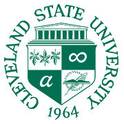
In this study, the response surface methodology (RSM) and artificial neural network (ANN) were employed to study the adsorption process of 2,4-dichlorophenoxyacetic acid (2,4-D) by using modified hydrogel, i.e., activated carbon poly(dimethylaminoethyl methacrylate) (AC/PDMAEMA hydrogel). The effect of pH, the initial concentration of 2,4-D and the activated carbon content on the removal of 2,4-D and adsorption capacity were investigated through the face-centered composite design (FCCD), optimal design and two-level factorial design. The response surface plot suggested that higher removal of 2,4-D and adsorption capacity could be achieved at the higher initial concentration of 2,4-D and lower pH and activated carbon content. The modeling and optimization for the adsorption process of 2,4-D were also carried out by different design methods of RSM and different training methods of ANN. It was found that among the three design methods of RSM, the optimal design has the highest accuracy for the prediction of 2,4-D removal and adsorption capacity (R2 = 0.9958 and R2 = 0.9998, respectively). The numerical optimization of the optimal design found that the maximum removal of 2,4-D and adsorption capacity of 65.01% and 65.29 mg/g, respectively, were obtained at a pH of 3, initial concentration of 2,4-D of 94.52 mg/L and 2.5 wt% of activated carbon. Apart from the optimization of process parameters, the neural network architecture was also optimized by trial and error with different numbers of hidden neurons in the layers to obtain the best performance of the response. The optimization of the neural network was performed with different training methods. It was found that among the three training methods of the ANN model, the Bayesian Regularization method had the highest R2 and lowest mean square error (MSE) with the optimum network architecture of 3:9:2. The optimum condition obtained from RSM was also simulated with the optimized neural network architecture to validate the responses and adequacy of the RSM model.
